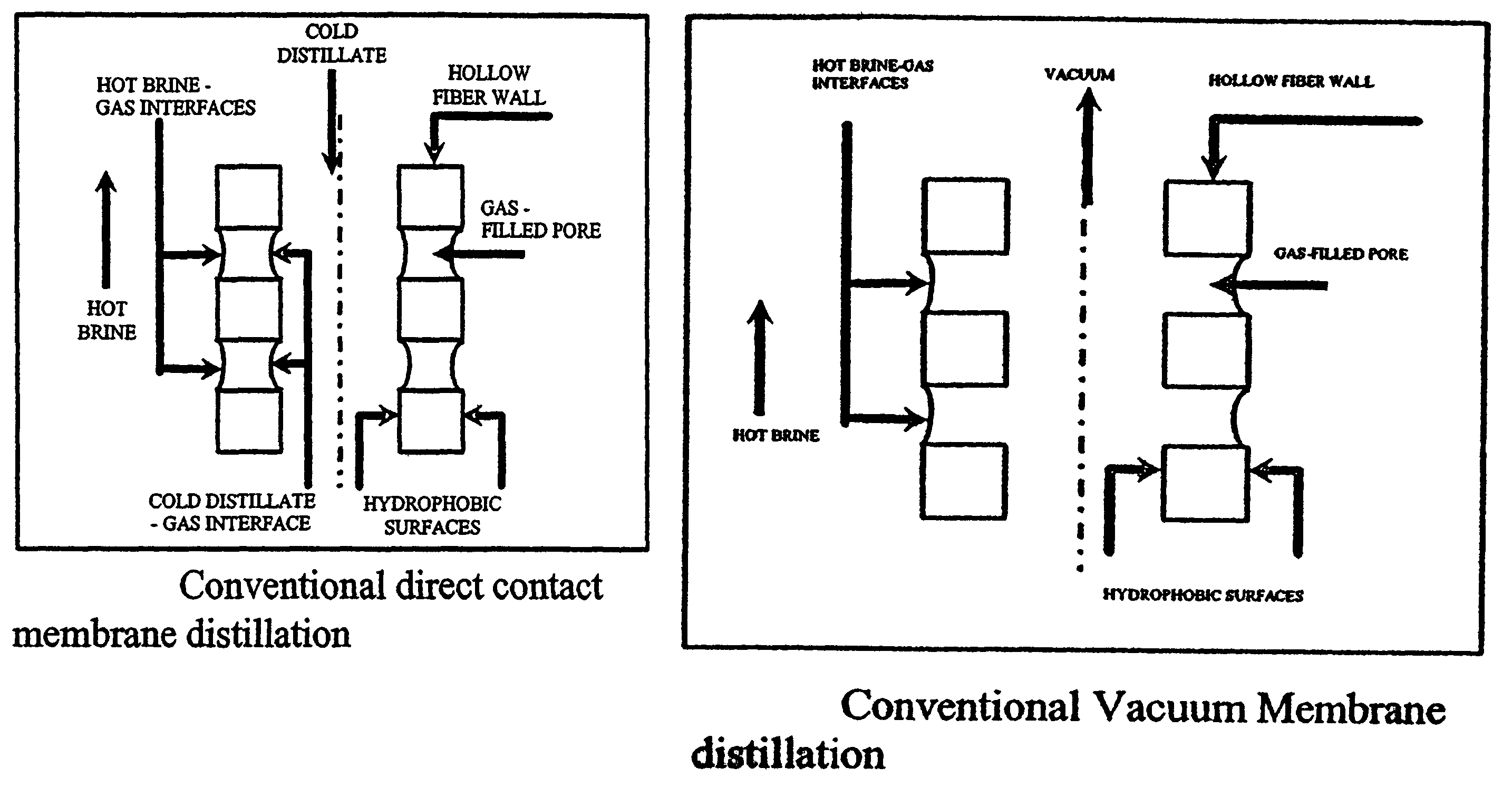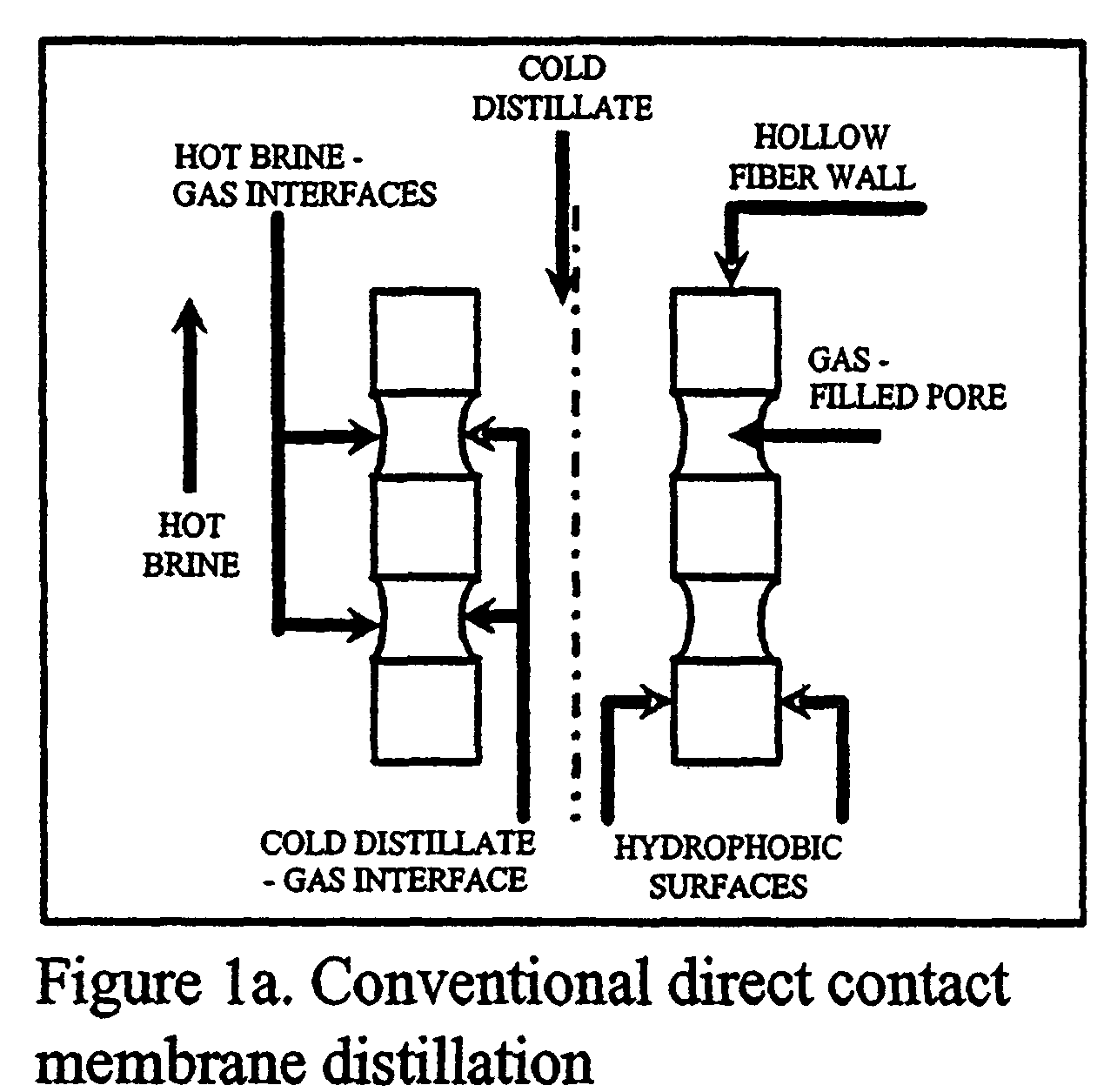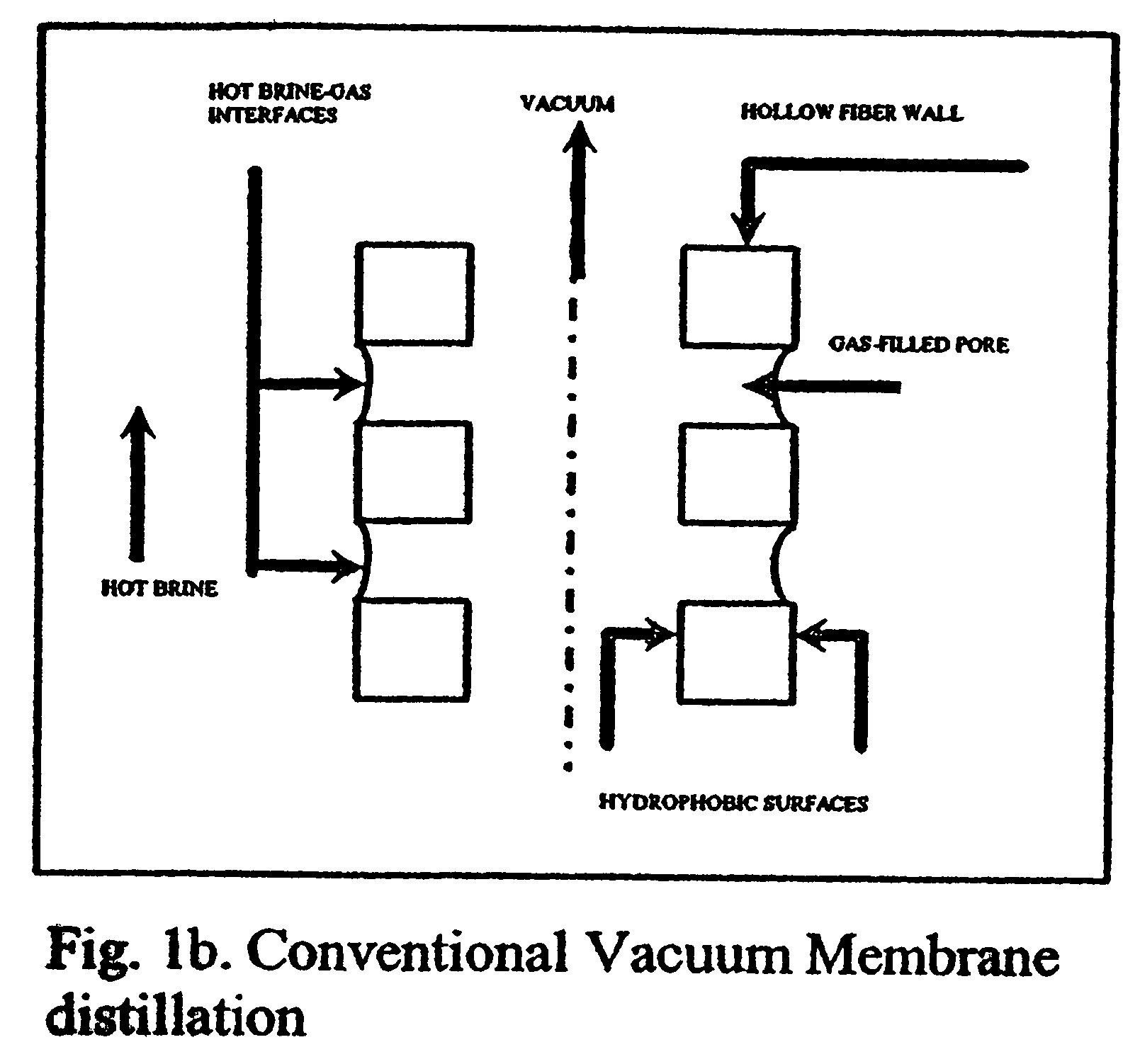Desalination devices and systems using porous hydrophobic hollow fibers and hydrophobic porous coatings
a technology of hollow fibers and desalination devices, which is applied in the direction of moving filter elements, filtration separation, separation processes, etc., can solve the problems of reducing the loss of sensible heat of brine, and achieve the effect of reducing pore wetting of the membran
- Summary
- Abstract
- Description
- Claims
- Application Information
AI Technical Summary
Benefits of technology
Problems solved by technology
Method used
Image
Examples
Embodiment Construction
[0079]Advantageous DCMD and VMD devices, systems and methods / techniques for use in a variety of industrial and / or commercial applications, including specifically desalination applications, are provided according to the present disclosure. Coated, porous hydrophobic hollow fiber membranes are used according to the present disclosure. Exemplary coatings include plasmapolymerized microporous / porous coatings, e.g., an ultrathin layer of a silicone-fluoropolymer. Pore wetting is substantially reduced and water vapor permeance through the fiber wall is essentially unimpeded.
[0080]The disclosed DCMD and VMD membranes are generally characterized by larger fiber bore diameters and wall thicknesses. The physical properties of the disclosed membranes substantially reduce the loss of brine sensible heat, e.g., heat loss via conductive heat flux through the membrane wall and the vapor space. In addition, according to exemplary embodiments of the present disclosure, the brine-side heat transfer c...
PUM
| Property | Measurement | Unit |
|---|---|---|
| wall thickness | aaaaa | aaaaa |
| wall thickness | aaaaa | aaaaa |
| wall thickness | aaaaa | aaaaa |
Abstract
Description
Claims
Application Information
 Login to View More
Login to View More - R&D
- Intellectual Property
- Life Sciences
- Materials
- Tech Scout
- Unparalleled Data Quality
- Higher Quality Content
- 60% Fewer Hallucinations
Browse by: Latest US Patents, China's latest patents, Technical Efficacy Thesaurus, Application Domain, Technology Topic, Popular Technical Reports.
© 2025 PatSnap. All rights reserved.Legal|Privacy policy|Modern Slavery Act Transparency Statement|Sitemap|About US| Contact US: help@patsnap.com



